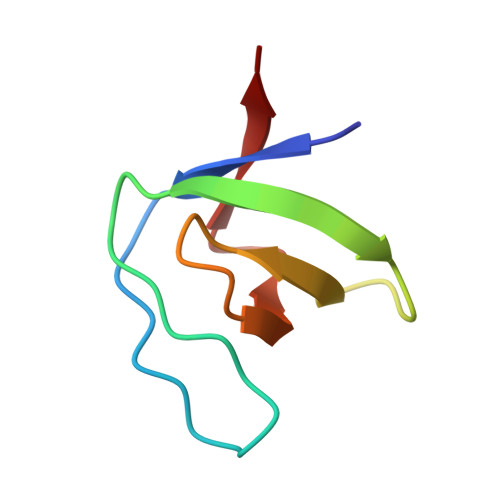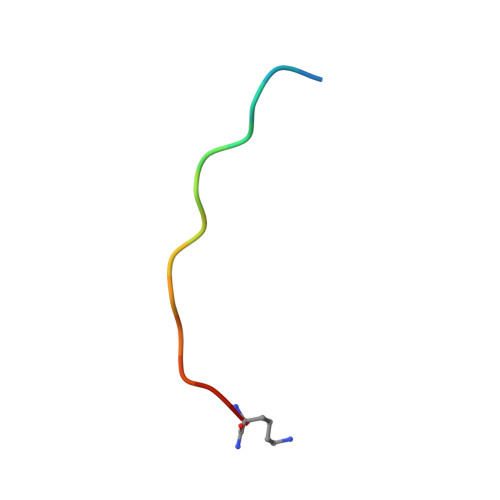Molecular Mechanisms of Tight Binding through Fuzzy Interactions.
Shen, Q., Shi, J., Zeng, D., Zhao, B., Li, P., Hwang, W., Cho, J.H.(2018) Biophys J 114: 1313-1320
- PubMed: 29590589
- DOI: https://doi.org/10.1016/j.bpj.2018.01.031
- Primary Citation of Related Structures:
6ATV - PubMed Abstract:
Many intrinsically disordered proteins (IDPs) form fuzzy complexes upon binding to their targets. Although many IDPs are weakly bound in fuzzy complexes, some IDPs form high-affinity complexes. One example is the nonstructural protein 1 (NS1) of the 1918 Spanish influenza A virus, which hijacks cellular CRKII through the strong binding affinity (K d ∼10 nM) of its proline-rich motif (PRM NS1 ) to the N-terminal Src-homology 3 domain of CRKII. However, its molecular mechanism remains elusive. Here, we examine the interplay between structural disorder of a bound PRM NS1 and its long-range electrostatic interactions. Using x-ray crystallography and NMR spectroscopy, we found that PRM NS1 retains substantial conformational flexibility in the bound state. Moreover, molecular dynamics simulations showed that structural disorder of the bound PRM NS1 increases the number of electrostatic interactions and decreases the mean distances between the positively charged residues in PRM NS1 and the acidic residues in the N-terminal Src-homology 3 domain. These results are analyzed using a polyelectrostatic model. Our results provide an insight into the molecular recognition mechanism for a high-affinity fuzzy complex.
- Department of Biochemistry and Biophysics, Texas A&M University, College Station, Texas.
Organizational Affiliation:

















